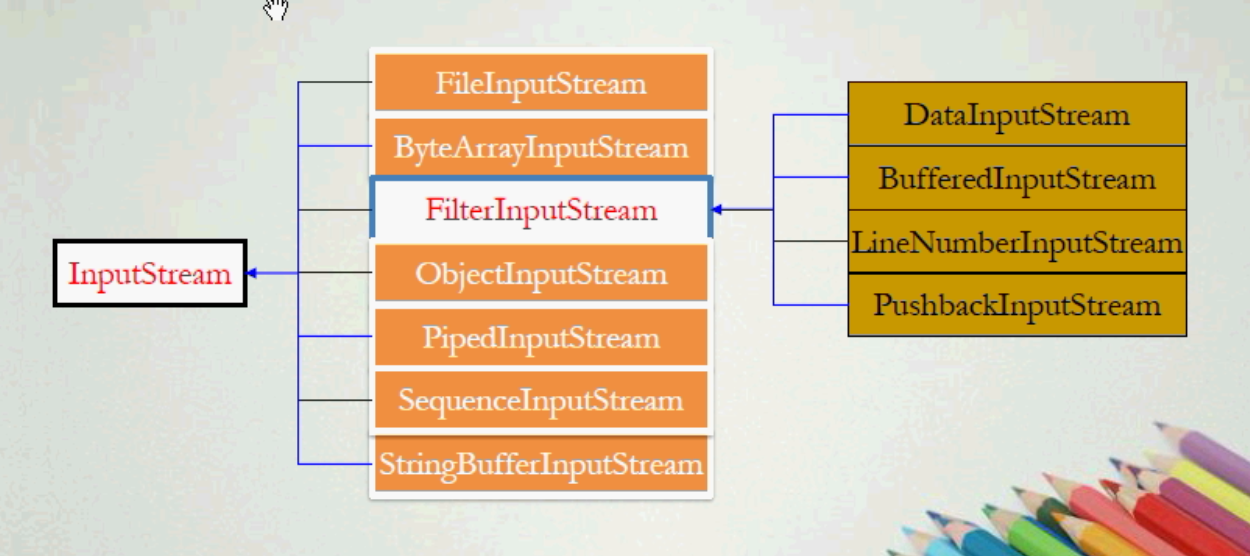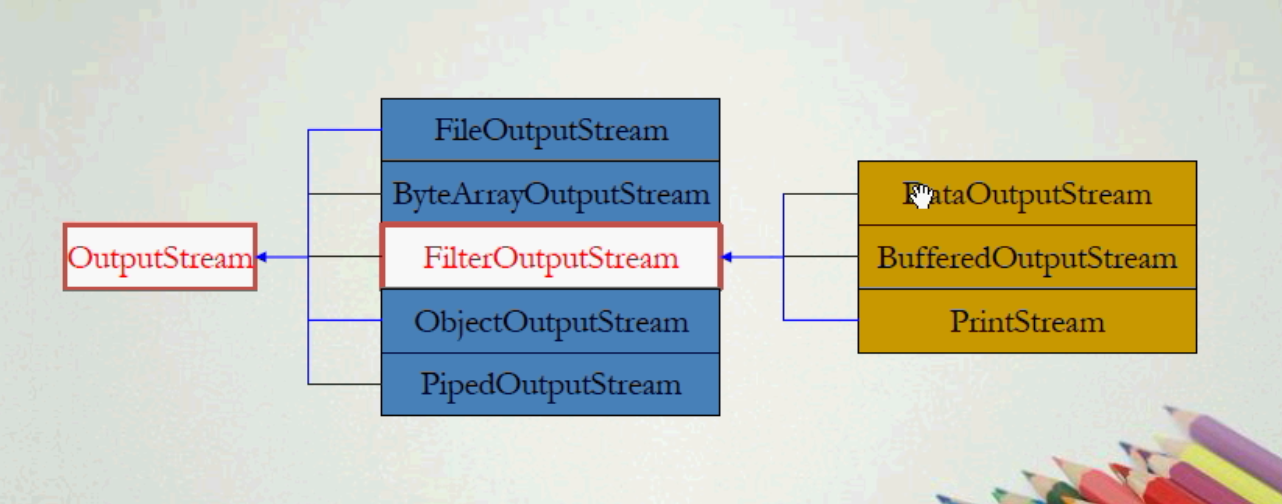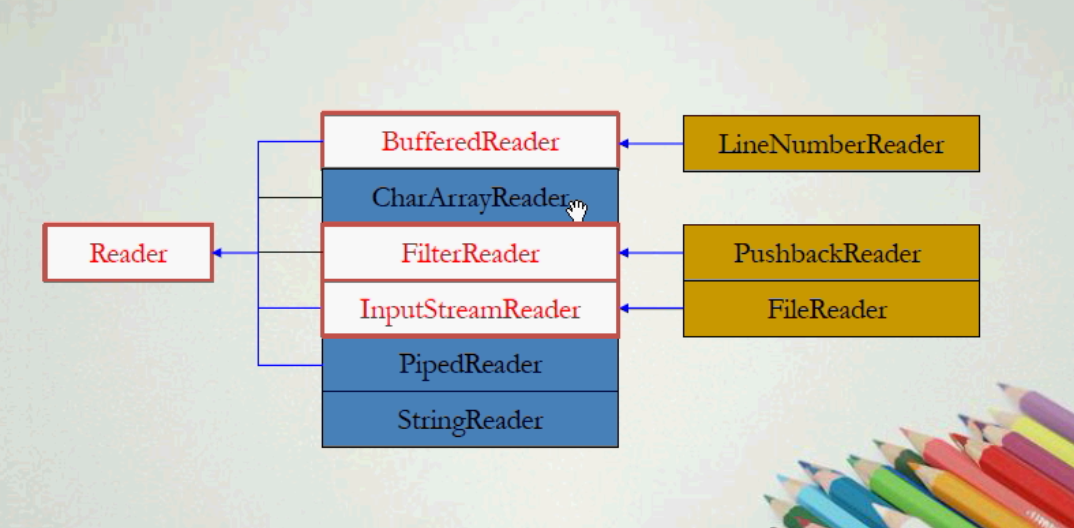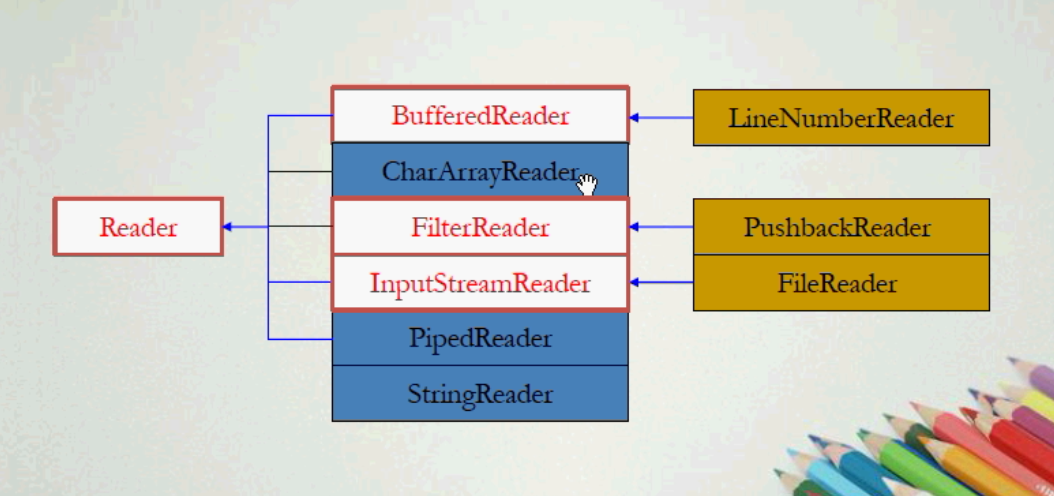对程序语言设计者来说,设计一个令人满意的I/O(输入输出)系统,是件极艰巨的任务。————摘自《Think in Java》
File
|
|
流
java程序通过流来完成输入/输出。流是生产或者消费信息的抽象。流通过java的输入/输出系统与物理设备链接。尽管与它们链接的物理设备不尽相同,所有流的行为具有同样的方式。这样,相同的输入/输出类和方法适用于所有类型的外部设备。这意味着一个输入流能够抽象多种不同类型的输入:从磁盘文件,从键盘或从网络套接字。同样,一个输出流可以输出到控制台,磁盘文件或相连的网络。流是处理输入/输出的一个洁净的方法,例如它不需要代码理解键盘和网络的不同。java中流的实现是子啊java.io包定义的类层次结构内部。
输入/输出时,数据在通信通道中流动。所谓“数据流(stream)”指的是所有数据通信通道之中,数据的起点和终点。信息的通道就是一个数据流。只要是数据从一个地方”流“到另外一个地方,这种数据流动的通道都可以称为数据流。
输入/输出是相对于程序来说的。程序在使用数据时所扮演的角色有两个:一个是源,一个是目的。若程序是数据流的源,即数据的提供者,这个数据流对程序来说就是一个”输出数据流“(数据从程序流出)。若程序是数据流的终点,这个数据流对程序而言就是一个”输入数据流“(数据从程序外流向程序)
流的分类
在java.io包中提供了60多个类(流)。
输入流/输出流
从功能上分为两大类:输入流和输出流。
从流结构上可分为字节流(以字节为处理单位或称面向字节)和字符流(以字符为处理单位或称面向字符)。字节流(byte stream)为处理字节的输入和输出提供了方便的方法。例如使用字节流读取或写入二进制数据。字符流(character stream)为字符的输入和输出处理提供了方便。它们采用了统一的编码标准,因而可以国际化。当然在某些场合,字符流比字节流更有效。
需要声明:在最底层,所有的输入/输出都是字节形式的。
字节流的输入流和输出流基础是InputStream和OutputStream这两个抽象类,字节流的输入输出操作由这两个类的子类实现。字符流是java1.1版以后新增加的以字符为单位进行输入输出处理的流,字符流输入输出的基础是抽象类Reader和Writer。
读数据的逻辑为:
open a stream
while more information
read information
close the stream
写数据的逻辑为:
open a stream
while more information
write information
close the stream
节点流/过滤流
节点流:从特定的地方读写的流类,例如:磁盘或一块内存区域。
过滤流:使用节点流作为输入或输出。过滤流是使用一个已经存在的输入流或输出流连接创建的。
类层次





API和示例
|
|
|
|
|
|